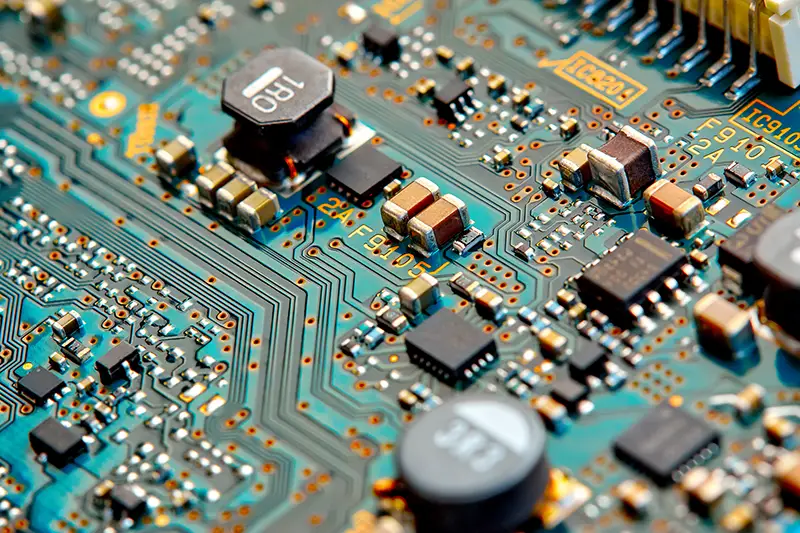Click here to get this post in PDF
IoT and the influx of data is beneficial for many business sectors, but also drove change in IoT solution development. Once fitted with IoT technology, devices can communicate and interact with each other, but offer remote monitoring and control capabilities.
Many developers chose available single board computers (SBCs), such as the NXP i.MX 8 board, as a foundation of the design, but this can lead to issues during high-volume production.
Prototyping is a simple solution to this problem. With a rapid prototype and development platform, you can verify proof of concept and illuminate where it may be fine tuned for optimization.
What is Rapid Prototyping for IoT Development?
Rapid prototyping helps designers and engineers produce a product. Typically, the IoT development process begins with hardware first, then software, then firmware. The hardware and software depend on each other for full functionality, so the product needs to start with something that functions reliably.
Without this fundamental component, it can start a vicious circle of components that don’t operate the way they should, leading to a different build, then leading to another build, and so on until the project timeline and budget are stretched thin.
Hardware is the most practical starting point that can guide the remainder of the product. As long as the development board functions properly, it can be used reliably with the software or firmware.
Some designers choose to build the hardware and software concurrently, adding components as needed to create the finished product. With each component added, the corresponding software and hardware components can be configured and tested.
This creates another challenge – remote and hybrid teams may be working on the same project. If the team is miles from each other, each engineer will need their own prototype board throughout the entire process. Buying and shipping the boards to each engineer adds a lot of money and time to the product, increasing the timeline and budget.
Boards can be printed with a shared design, but that requires all parties have a 3D printer and time to create the design. This is faster, but not ideal.
A ready-made SBC can solve this problem. All engineers and designers can purchase a tiny, ready-made SBC to use for rapid prototyping and development, complete with all the chosen components. Because these are widely available and require no design efforts and no wait, SBCs can act as excellent foundations for rapid prototyping and concurrent software and firmware design.
Value of Prototyping for IoT Development
One of the common misconceptions about rapid prototyping is that it’s low quality, mostly due to the speed of production. In theory, designers may miss important design features that create more problems than the ones the prototype aims to solve.
This isn’t accurate, however. Rapid prototyping offers flexibility and freedom for engineers and designers. During the rapid prototyping process, a design can be evaluated and fine tuned during any stage of the process and optimized for a better final design.
Designers also have the benefit of solving the right problems using design thinking and evaluating different design options using A/B testing. As the process occurs, designers can collect real-time feedback and share ideas to improve the overall design.
Prototyping also dramatically reduces the time-to-market. It may seem counterintuitive to verify the design before full production to save time, but prototyping ensures that the design functions as it should. Otherwise, mass production can continue with a flaw, meaning that significant time and cost are wasted.
Understanding Single Board Computers
A single board computer (SBC) is a complete, functional computer with a microprocessor, memory, input/output (I/O) functions, and other features and components contained on one board. RAM can be built in at a chosen amount.
Though it may seem counterintuitive to the complexity of a personal computer or enterprise computer network, SBCs are elegant in their simplicity. These boards are used for smartphones, tablets, and other consumer electronics, as well as embedded computer controllers to operate devices, such as IoT devices.
With the simple, stripped-down design, SBCs like the i.MX 6 are prone to fewer “bugs” or issues that contribute to downtime or failures. Because of this, SBCs are often chosen for vital systems like traffic light controllers, missile guidance systems, vehicle anti-lock braking and stability control, and medical uses. The most important quality SBCs offer is reliability, which is an essential benefit for industrial IoT applications and other business uses.
How to Choose a Board for Rapid Prototyping and Development
The most important part of choosing an SBC for rapid prototyping is the outline of the product requirements and specifications. The requirements and specifications of the product will guide what components and functionality are most important, especially as the board compatibility is designed alongside the software and firmware.
Secondly, for an IoT board, connectivity is vital. These devices rely on strong connectivity to function as they should, so it’s important for the board to support the level of connectivity necessary to prove the concept. Pay attention to options for Ethernet, Bluetooth, and Wi-Fi to choose the best option.
Next is the peripherals for the features the board is designed to have. SBCs have virtually limitless configuration options and can be scaled as needed, so choosing the right features from the start is vital to meeting the product specifications.
Necessary peripherals may include buses for serial protocols like SPI or I2C, USB or HDMI ports, and pin-outs for pulse width modulation. Additional peripherals may be needed to support specific product needs, depending on the specifications of the product itself.
Finally, open-source hardware may be needed. CAD format, KiCAD design files, and Gerber files are helpful for outlining and archiving the final design in the development process.
Key Takeaways
Readily available SBCs are an ideal platform to prove product concepts and create rapid prototype designs. Commercially available SBCs with common MCU and wireless components ensure that the prototype can head into full production after proof of concept, offering advantages in time-to-market and collaborative teams. With detailed planning, rapid prototyping with a ready-made SBC streamlines the entire development process.
About the Author: Jason Khoo
Jason is the Head of SEM at SolidRun which is a global leading developer of embedded systems and network solutions, focused on a wide range of energy-efficient, powerful and flexible products which help OEMs around the world simplify application development while overcoming deployment challenges.
You may also like: Best custom-made PCB Prototypes to Empower Your Electronic Projects
Image source: Shutterstock.com


